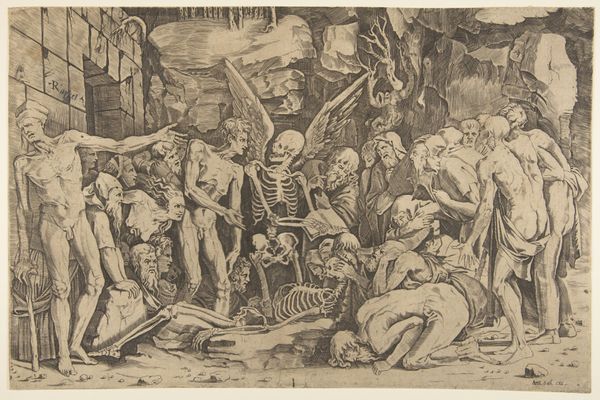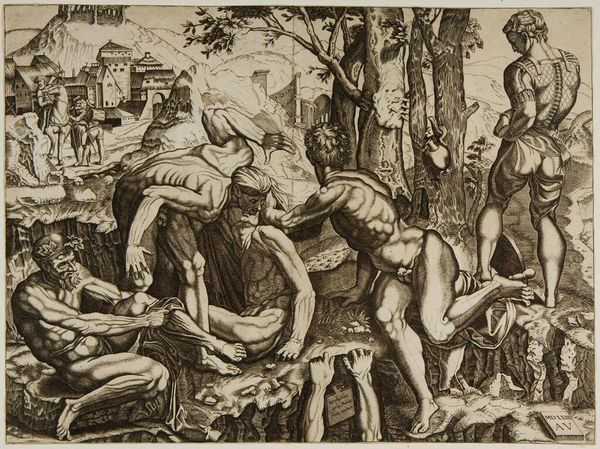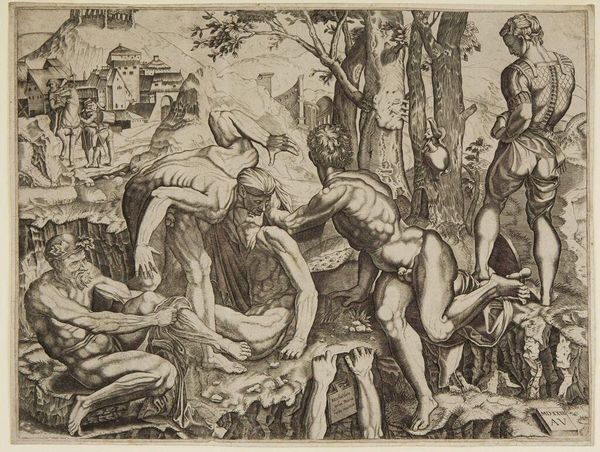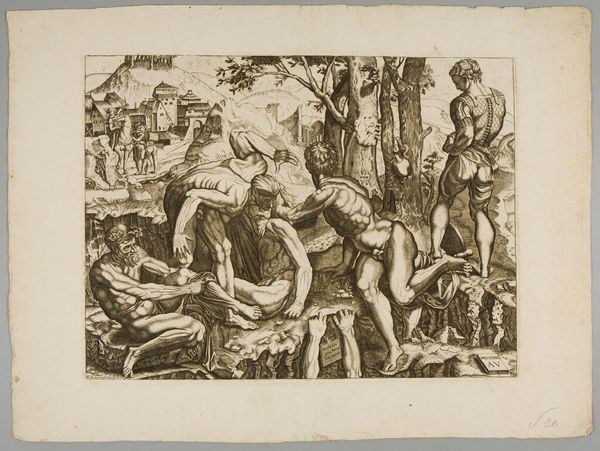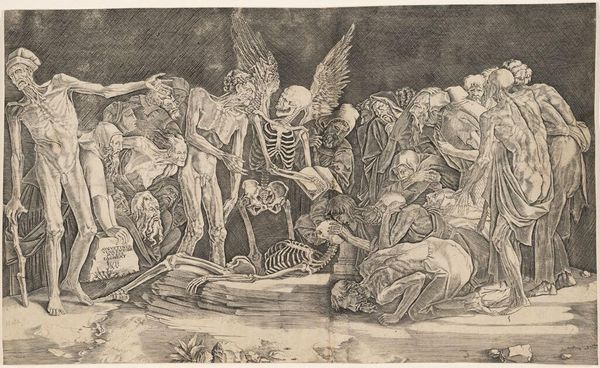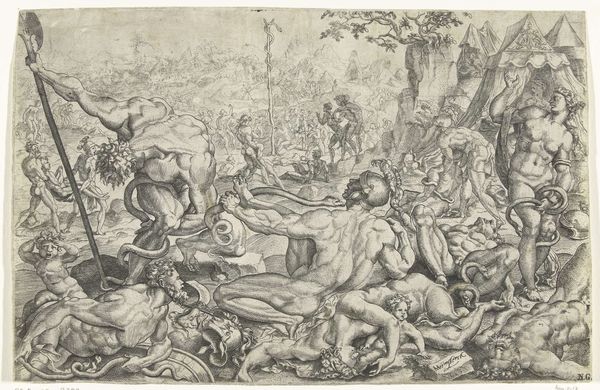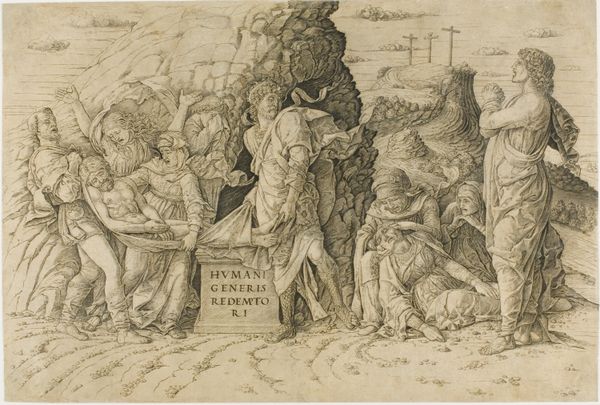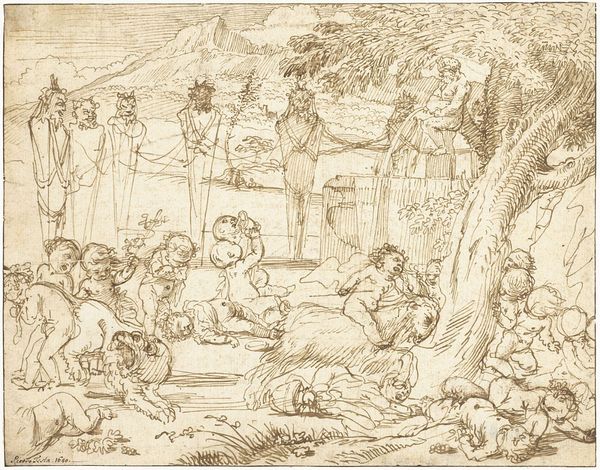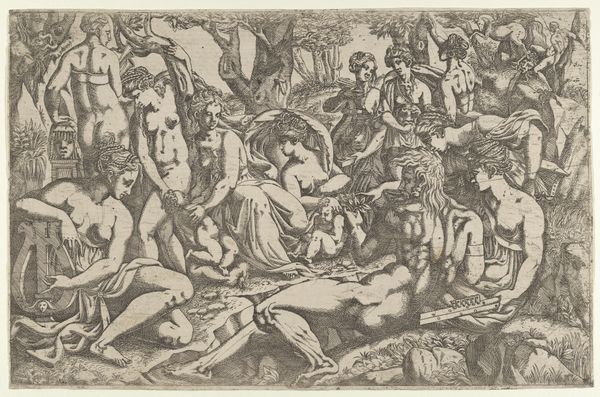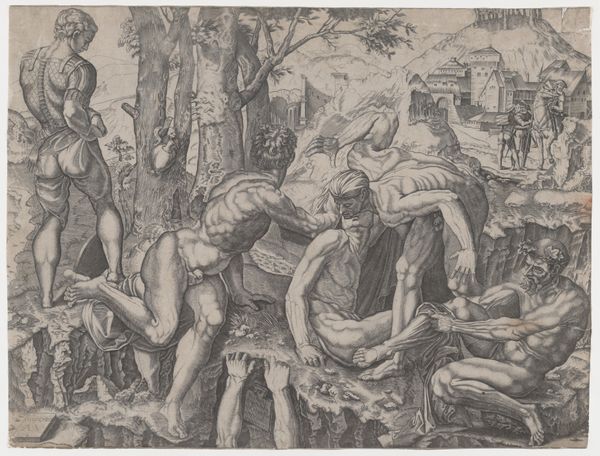
Copyright: CC0 1.0
Curator: Marco Dente created this print, "Skeletons." Considering the date, around the early 16th century, its depiction of mortality resonates with significant religious and philosophical shifts. What's your first reaction to it? Editor: It's raw, isn't it? Like a bad dream etched onto paper. So much writhing and despair—yet also this strange, stark beauty in the anatomy itself. Curator: The image builds on a long tradition of memento mori. Dente likely drew on earlier art and philosophical texts that warned against earthly vanity. The winged skeleton as the central figure is particularly compelling. Editor: I can't help but feel a morbid fascination. Those reaching figures almost look like they want to escape from whatever the skeleton is offering – it is life or death or some kind of strange transcendence? Curator: The print participates in a wider conversation about death and its power, and how it shapes the individual and collective experiences within the early 16th century. Editor: Seeing this, I wonder, are we any closer to understanding it now than they were then? Maybe that's the point. Curator: Precisely, and perhaps why it still speaks to us today, centuries removed from its original context. Editor: Indeed. It’s a good reminder that beauty and terror can coexist, and maybe even illuminate each other.
Comments
No comments
Be the first to comment and join the conversation on the ultimate creative platform.
